The Ultimate Guide To Growth Hacking! Learn How To Get Your First 1000 Users, Understand The Basics Of Growth Hacking & How It Can Be Applied To Your Business.
I’m going to let you in on a little secret: Growth hacking is the future. It’s also the present, and it might just be the past. But growth hacking isn’t a time-related discipline, so let’s stick with the future for now.
The term was coined by Sean Ellis in 2010. Since then, it’s become a buzzword that people throw around without knowing what they’re talking about.
There are all sorts of different titles for roles that are supposed to be responsible for growing a business—they’re called growth marketers, technical marketers, data-driven marketers and even “head of growth.” All of these titles mean the same thing: Someone who is responsible for increasing growth in a company.
Growth hackers are hyper-focused on using data and experimentation to grow their businesses in cost-effective ways.
They don’t use spreadsheets or email marketing software or SEO tools as other people do—they use those things, but they combine them all together into a cocktail that tastes delicious to your customers and makes tons of money for you at the same time.
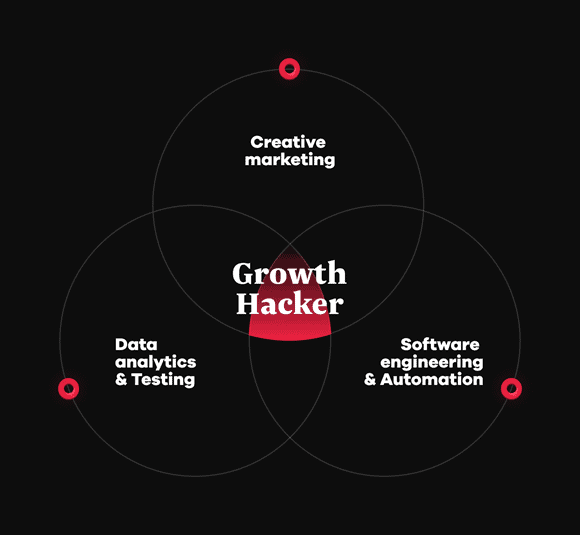
Sound too good to be true? That’s because it is! Everything I just said was a lie (except for the part about this being a secret).
Dropbox is an iconic example of how growth marketing can be effective. In September 2008, Dropbox acquired 100,000 users.
The following year, that jumped to a whopping 4 million registered users—an astonishing 3900% growth in 15 months.
Dropbox’s growth was driven by referrals.
Growth hacking ToC
Growth hacking as testing, experimentation, and growth
Growth marketing is a way of meeting customer needs and growing your business. It’s not a product or service, but rather a process you can use to reach new customers and retain existing ones. Growth marketing is also a way to experiment with your product or service in order to find out what works best for your audience.
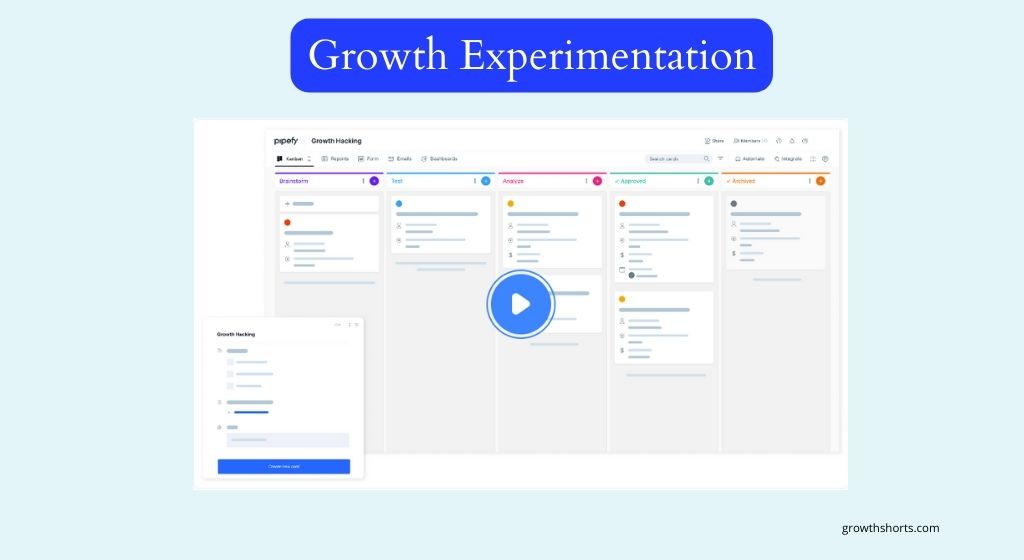
The idea is that by taking an iterative approach and testing different ideas, you’ll be able to figure out what it takes for YOU and YOUR PRODUCTS/SERVICES TO GROW!
If you’re looking for growth hacking tools, look no further!
We’ve compiled a list of over 100+ growth hacking tools that will help you get started and keep you on track.
Growth marketing vs growth hacking
As you might imagine, growth marketing is also referred to as “growth hacking.” You may be wondering, what does this mean?
Growth hacking is a term that was coined in 2010 by Sean Ellis and Morgan Brown. They were the first to define it as a marketing strategy that uses creativity and innovation to drive growth.
Growth hackers are not just marketers—they’re usually involved in product development and graphic design as well. They’re also data-driven marketers who have technical skills like coding or web development.
Growth hackers are data-driven and analytical

Growth hackers often have backgrounds in analytics, product management and engineering. They understand the value of measuring what works and what doesn’t, and they know how to make changes based on those insights.
They also often have backgrounds in engineering or data science — which makes sense, since you need a solid understanding of your product’s capabilities before you can effectively use them as marketing tools.
Growth hackers might also come from product management roles where they played an active role in building out their company’s products from the ground up.
Finally, many growth hackers have a background in marketing. This gives them not only insight into how people buy products but also knowledge about how brands communicate with customers through paid advertising channels like social media ads or banner ads on websites.
Effective Retargeting as an example of data-driven marketing
Retargeting is one of the best examples of data-driven marketing. If you’re using retargeting, you’re using data to drive your marketing efforts.
Retargeting is used by companies who have already validated their product or service with their market. They’re driving traffic to their website and then showing ads to people who have previously visited that website.
The key here is that you’re only showing ads to people who have already viewed your entire website or a specific page on your website. This way, you know who your customers are, and can show them ads that are relevant to them.
Here’s how companies are leveraging growth marketing;
- 17% of marketers use landing page A/B tests to improve conversion rates. (Hubspot)
- Email collection forms were the most successful at converting viewers, with a 15% conversion rate in 2020 (Hubspot)
- Friday is typically the day with the highest clickthrough rate potential, at 2.7%. (Campaign Monitor, 2020)
Growth hacking examples
Netflix
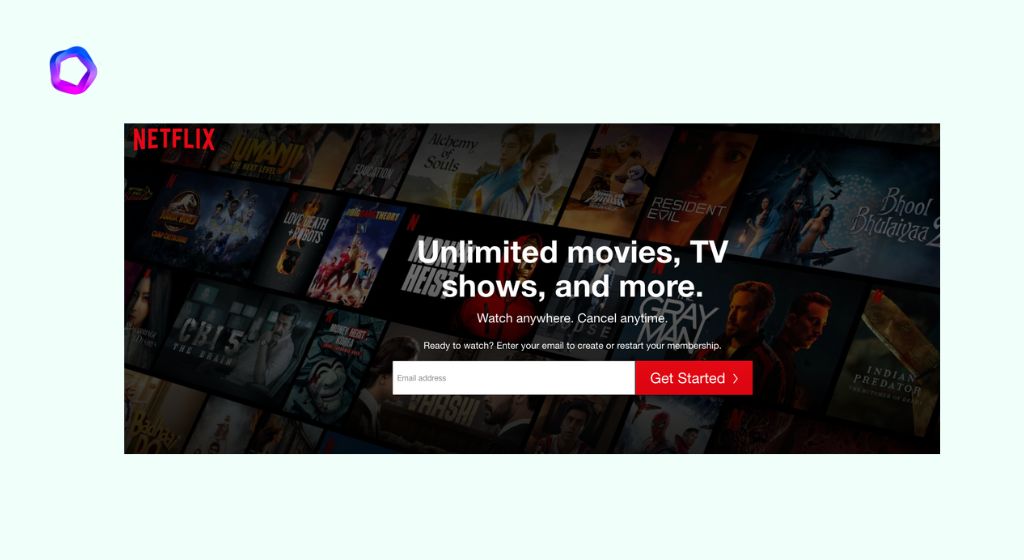
Netflix is one of the world’s most popular streaming services, but it was originally a DVD rental service. This means that Netflix had to get people to buy DVD players first before they could rent them out.
So what did Netflix do? Well, they teamed up with manufacturers like Sony and Panasonic to include coupons for Netflix in every box of DVDs sold. It was a win-win: customers got free rentals and Netflix got more subscribers!
But there was still a problem: customers didn’t want to buy DVD players because they couldn’t find DVDs easily in stores. By including a coupon for Netflix, the DVD manufacturer could showcase a library of 1,000+ titles that customers could rent by mail without having to visit a store.
This partnership helped Netflix grow its customer base by targeting people who had already purchased DVD players—and it all started with a simple coupon inside of a DVD player box!
Slack
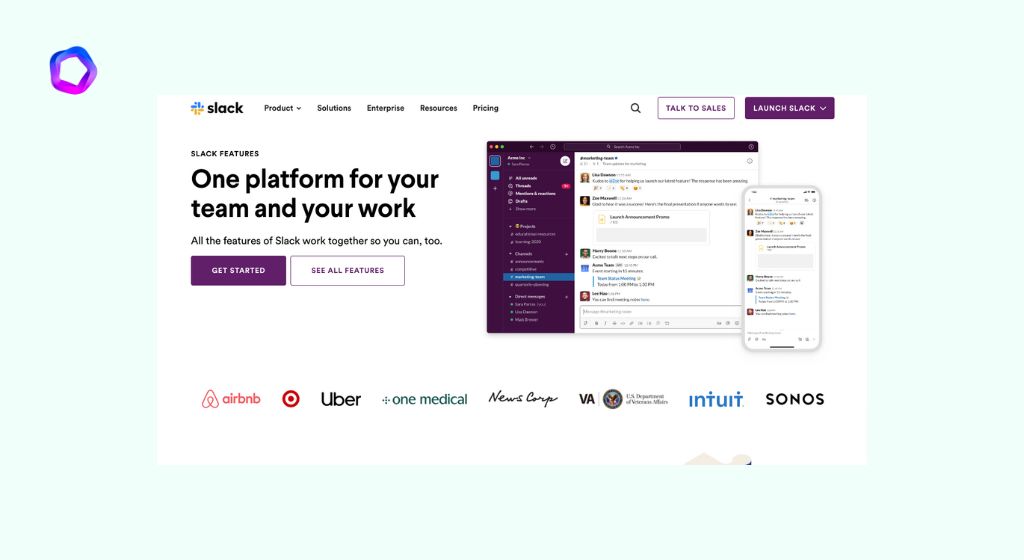
Slack has grown to be one of the most popular messaging platforms in the world, and it’s all thanks to their growth hacking strategy.
Slack was launched in 2013, and within three years, they had 2 million daily active users. In 2017, they reached 5 million daily active users.
What’s their secret? Slack’s growth hacking strategy is simple: invite your entire company to use Slack.
They did this by making it easy for employees at different companies to share their Slack credentials with coworkers so that everyone can talk about projects and collaborate on ideas. This makes it easy for employees at different companies to work together on projects without having to go through a lengthy onboarding process every time they start working with a new client or partner.
In addition, Slack has made it easy for people outside of their organization to sign up for accounts by allowing anyone with an email address (even if they’re not part of your company) to create an account without having to enter any additional information or provide payment details (although there are paid plans).
This has helped them grow virally across many different industries—from startups and small businesses all the way up through enterprise clients like Twitter and Adobe—because it makes it easy for other people who might not work together directly.
Uber
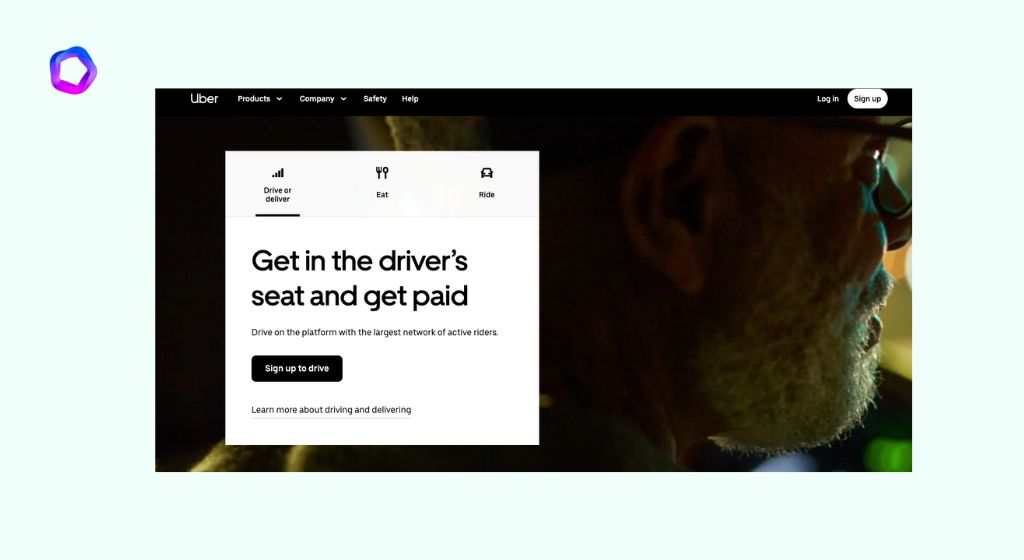
Uber’s growth hacking strategy is one of the most famous examples of how to use growth hacking to grow a business.
The company was founded in 2009 by Garrett Camp and Travis Kalanick, and originally just offered carpooling rides between New York City and San Francisco. But as they expanded into other cities, they realized that they could use their existing infrastructure to offer more services—including taxis and luxury car services.
They quickly realized that they couldn’t just expand into every city in the world—they had to find ways to get people talking about Uber in those new cities before they even arrived there. So they started offering discounts on rides from airports, which helped them get new customers without spending money on advertising or marketing campaigns.
Then, when drivers were dropping off their passengers at the airport, Uber employees would approach them with invitations for drivers to become part-time drivers for the service (and potentially earn $1,000 per week). This process is known as “onboarding.” It was so effective that it led to millions of new customers signing up for Uber within a few months of being onboarded!
Hubspot
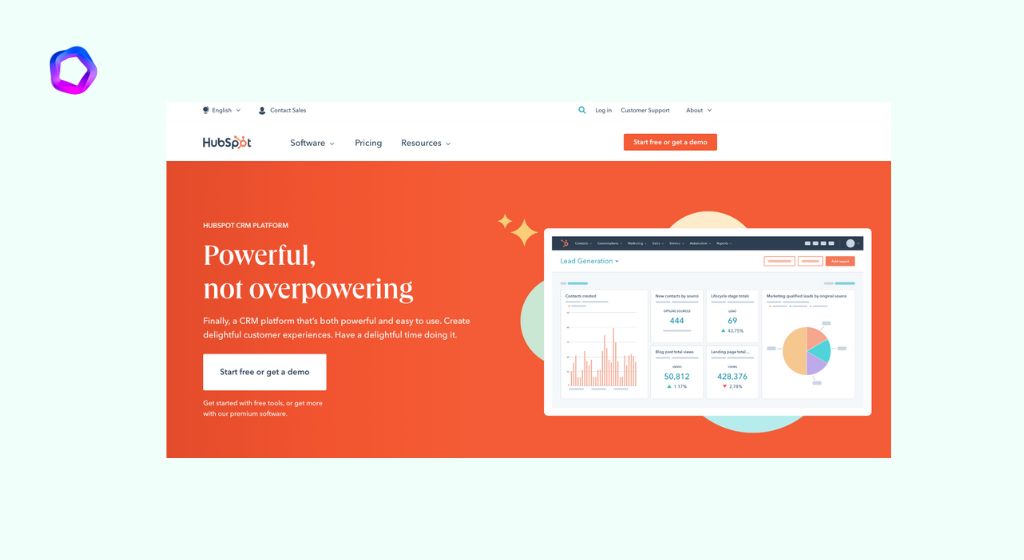
Hubspot is a company that’s made its name on growth hacking. Their success is partially due to the fact that they didn’t just create a product and then start selling it—they created a tool to help users evaluate their sites, and offered it for free.
Hubspot’s founder and CTO Dharmesh Shah credits the website grader tool as a key part of growing the company to 15,000 users and a $1.6 billion market value.
The lesson here? If you’re trying to grow your business, offering something for free can be an excellent way to do it!
The growth hacking process
The growth marketing process consists of three steps: finding the right customers, meeting their needs, and retaining their business and keeping them happy.
Growth marketers use data and experimentation to find the right customers. Then they use a combination of data and experimentation to meet those customers’ needs. And finally, they use more data—on a constant basis—to make sure that you’re retaining your current customers’ business (and keeping them happy).
Using data effectively is key to all three stages of this process. It’s not enough just to have good ideas about who you should be targeting; if you don’t have any way of measuring how well those targets are performing against specific metrics like sales volume or retention rate then how do you know whether or not they’re working?
What is the AARRR Pirate Metrics Framework?

AARRR stands for Acquisition (or Attracting), Activation, Retention, Revenue and Referral. It’s a framework that can be used to measure the growth of your business. The framework gives you a birds-eye view of how your company is doing across all its metrics and how they relate to each other.
It’s not meant to replace any existing metrics – it’s just an additional way of looking at things that might help you identify opportunities for improvement in your marketing strategy or product development process.
Acquisition
The first step to building a sustainable, profitable business is acquiring users. There are many ways to do this—advertising (either through paid or organic channels), partnerships and referral programs, media coverage, etc.—but I’m going to focus on organic acquisition channels.
In the AARRR framework, marketers should focus on building a channel that can attract users organically. Organic channels are free and scalable; they’re also less vulnerable to competition because they rely on word-of-mouth recommendations instead of paid ads.
You can build your own channel by leveraging existing relationships you’ve established with customers, or by creating new ones through content marketing strategies like blogging and podcasting.
Top acquisition strategies
Excellent product
A great product is the foundation of all successful customer acquisition strategies, but it’s not always easy to get right. If your product doesn’t have the features that buyers are looking for, or if customers find it difficult to use, you’re going to struggle.
If you want to stand out from your competition, then you need a differentiated product that stands on its own merits. If buyers can’t see what makes your solution different from other offerings in the market, they won’t buy from you – simple as that.
But having a unique selling proposition doesn’t mean that everything else needs to be different as well: if a customer already knows how an application works (or feels like they know), then it’s worth bearing in mind that they might simply prefer something familiar rather than taking an unnecessary risk with something new and untested by them before now!
Free trial
Free trials are a great way to get customers to try your product. They are also a good way to get your product in front of new customers and customers who have not used your product before.
The free trial is a time-limited offer that gives users access to your app, or website, or service for free. The idea is that after using the software for some period of time (usually 7-14 days), they will be hooked on it enough that they will want to pay for it on an ongoing basis once the trial ends.
Demo of your product
Demoing your product is a great way to get feedback on how well it works. You can do this in person or via video call; either way, you’ll want to make sure that whoever you’re demoing for understands how everything works before they give their feedback.
If possible, show them an actual example of what their life would look like with your product in place. Ask them if they have any questions about anything in particular and always listen closely for any concerns or hesitations they might have about using your service (or paying for it).
Gated content
Gated content is a method of “nudging” potential customers to sign up for a free trial. It’s usually in the form of an email or landing page, but it could also be a video, article or another piece of content that explains the value of your product and gets people excited about using it.
The goal is simple: get people to give you their email addresses so they can receive updates on the product as you develop it (or even before you launch). You can also use gated content as an incentive to get people who are interested in your product or service to sign up for a free trial so they can try it out right away without committing any money upfront.
Video content
Video content is one of the best ways to communicate with customers. Not only is it more engaging than text-based content, but videos are also more likely to be shared and remembered by customers.
content marketing
Content marketing is a marketing strategy to attract and retain customers by creating and distributing valuable, relevant, and consistent content. The objective of content marketing is to build a relationship with your audience and convert them into customers.
Referral marketing
Referral marketing is a great way to get new customers.
It’s a marketing tactic that involves a customer recommending a product or service to their friends or contacts.
The person who receives the recommendation is called the referee, and when they buy something because of this referral, it’s called an advocacy transaction.
Email marketing
Email marketing is one of the best ways to connect with potential customers and get them to buy your product. The key is to create an email sequence that will convert into sales at a high rate. First, you’ll want to send out an informational email that explains what your company does and why they should care about it. Then, follow up with another email offering a discount or special deal on your product if they purchase within a certain timeframe (e.g., 24 hours). Finally, include a link in the final email that takes customers directly to where they can buy from you (e.g., Amazon).
Incentivized offers
A customer acquisition tactic that’s becoming more popular is incentivized offers. Incentives are a great way to encourage trial or purchase, and there are many different types of incentives you can offer your customers:
Incentive promotions also come in two flavors: quantity-based and value-based. Quantity-based incentives reward customers with discounts based on the amount they spend during a set period. Value-based incentives reward customers with discounts based on their total purchase value across all transactions within a set period. This can be helpful if you’re selling products at different price points and want each buyer’s purchases to count towards earning big discounts later on down the line!
Metrics to measure
Some Acquisition Frameworks
The first step in your acquisition strategy is to identify your target audience. You can do this using persona or fictional characters that represent the different types of customers you want to attract. You can use these personas to inform your marketing strategy, so they’ll be important in the next step. Download persona template.
Next up is the Bullseye Framework, which helps you identify marketing channels with traction and the best ROI. This will help you decide where to spend your ad dollars, so it’s important to take advantage of all available data as you build out your plan.
Finally, Journey Maps will help you understand the customer touch points and journey throughout their relationship with your company; this information will help inform all aspects of your acquisition strategy from product development through marketing campaigns and customer service interactions.
Activation
The Activation step is all about making sure that you can deliver value to your users as quickly as possible after acquiring them. If they don’t see that value, they will abandon the product and never come back again.
Some Activation Frameworks
Metrics to measure
Retention
Retention is the percentage of users who return to your app after a certain period of time.
Retention is important for long-term success. It’s not enough to just get people using your product—you have to keep them happy and coming back as well. If you can retain users, they will spend more time with your product, which will increase the likelihood that they continue using it over time and recommend it to others.
Retention frameworks
Metrics to measure
Revenue
If you’re following the AARRR funnel, you know that revenue is one of the last metrics to be considered. Once you’ve got your customer base, it’s time to collect some cash! And one of the most important metrics in this phase is customer lifetime value.
Customer Lifetime Value = [Average Revenue per Customer] * [Churn Rate]
The customer lifetime value is calculated by dividing your average revenue per customer by your churn rate. For example, if your average monthly revenue per customer is 100€ and your churn rate is 5%, this means that your customer lifetime value is 2000€ (100 * (1/0,05)).
Metrics to measure
Referral
Referral: Achieving viral growth by having users refer others to your product.
Referral marketing is a technique that helps you get more customers by asking existing users to refer your product or service to their friends, family, and colleagues.
To make it work, you need a strategy that includes asking for referrals, rewarding those who bring in new business, and tracking how many referrals come from each user.
When implemented correctly—and with the right tools in place—your referral program can be an effective way to attract new customers without spending money on ads or other conventional marketing tactics.
Metrics to measure
What is your “North Star Metric”?
North Star Metrics, or North Stars for short, are great: they help you focus on what matters most for your business, and avoid getting distracted by vanity metrics or vanity goals.
But they can also be confusing to set up. That’s why I recommend following the 8 steps I’ve outlined below.
Let’s just start with this though: there is no “right” NSM for your company (unless of course you’re a pizza delivery service, in which case it should be number of deliveries).
The point of the North Star is that it highlights how to measure success for YOUR business. Your North Star is unique to your company and its goals so, if you haven’t already chosen a North Star and are looking for help getting started with one, read on!
8 steps to find your North Star Metrics
This could be a step in your customer’s experience, or it could be an internal process, like how long it takes you to make a new hire or how many customers return after their first purchase. This can vary depending on your business and industry, but if you don’t pick one thing that matters—and something that can be measured—you won’t get anywhere.
It’s also important to choose a metric that is relevant to your business. For example:If you’re operating in retail, then revenue per customer might not have much meaning for you; instead, focus on revenue by channel (in-store vs online).
If you’re a B2B company selling software solutions, then revenue might not be an appropriate metric at all; instead, consider retention rates and/or net promoter scores from existing customers who have used the product or service before making another purchase from your team (which will help inform new sales opportunities).
Next, take a look at your customer’s journey. If you’re not familiar with the concept of a customer journey map, it’s an easy way to visualize how your customers move through their buying processes.
A good customer journey map will show how each step of the purchasing process aligns with their goals and motivations. It can also help you identify moments that are important for them (and for you)—moments where customers want something specific or need particular information or assistance before they can move forward with their purchases.
Now that you’ve determined who your customers are and what their “North Star Metric” is, it’s time to find out exactly which moment in the customer journey you’re going to focus on.
The first step is identifying the exact moment in their journey when they will make a decision or take an action that can be measured by a specific metric. For example:
- If you sell airplane tickets online, maybe it’s when they choose seats or buy airport parking tickets.
- If you run a restaurant, perhaps it’s when they decide on an appetizer or entree (and maybe even wine pairings).
Once you’ve identified this moment—the point of conversion—you’ll want to think about how this information will help guide the direction of your business. The most important thing here is making sure that whatever metric(s) are selected align with how you want people thinking about themselves when they enter into this experience with your brand (i.e., do not choose metrics based solely on revenue).
To start, you need to choose an action that is within your control. This may sound obvious, but if you choose something that is out of your hands (e.g., “Our customers will love our new product!”) it doesn’t really qualify as a North Star Metric.
For example, let’s say we want to get more customers to sign up for our email newsletter—this could be the NSM we’re looking for:
- Action: Sign up for our newsletter;
- Measurement: How many visitors did this page receive?
Now, what if we made some changes based on this metric? We could add a pop-up asking people if they would like to sign up and track how many people clicked on it.
If enough people clicked through that pop-up then maybe it was worth doing—but even then there are other factors at play here besides just how many clicks happened! Maybe there were other things going on in the world at the time which caused those clicks; maybe there were other concerns from users who didn’t click through; etc.
- Pick a metric to measure the action you care about.
- The metric should be something you can measure and that indicates whether or not your strategy is working. It should also be something you can control, as well as something you can improve over time. Lastly, it needs to be something worth celebrating when it goes up!
The next step is to translate the NSM into a goal that everyone on your team can understand, be motivated by and influence. If possible, find out what goals employees have set for themselves. You should also talk about how the company’s strategy affects their ability to achieve those goals. For example:
- A marketing manager may have set a goal of increasing sales by 10% by year’s end; however, if sales go down overall this quarter due to changes in SEO algorithms or competitor activity, then she might need to revise her plan or find ways of mitigating the impact on her team until things improve again.
- A director of engineering may want to increase retention rate by 2%, but if there are no new features coming out soon (or any at all), then it will be hard for him/her and his team members as well as other stakeholders across different departments/functions within your company (e.g., marketing) who rely on this metric for their own KPIs (Key Performance Indicators).
You’ve defined your goal and created a hypothesis around how to reach it. Now what?
It’s time to get started!
You may have heard the phrase “fail fast, fail forward” in reference to entrepreneurship or innovation. That same mentality applies here: don’t worry about getting it right on the first try, just put something out there and test it. You can always make adjustments later if needed.
But first things first: before you start working towards your NSM, make sure you have some kind of metric in mind that will tell you if you’re headed in the right direction or not (like a sales conversion rate).
This is crucial because then once we’ve established that we’re making progress towards reaching our goal—and know when we aren’t—we can adjust accordingly instead of wasting time trying different things blindly hoping one will work out better than another
Once you have a North Star Metric, it’s important to track progress towards the goal.
You can do this by keeping a journal, or by using other tools like a spreadsheet or even the Notes app on your phone. Try different methods until you find one that works for you!
When tracking your NSM is working well and serving its purpose in helping you achieve what matters most in life, celebrate! Measurement alone won’t get us where we want to go; measurement plus celebration will.
The North Star Metric is a single metric that you use to drive growth. The NSM helps you focus on what matters most for your business, and avoid getting distracted by vanity metrics or vanity goals.
North Star Metric’ examples of tech industry leaders
As the company’s growth engine, the North Star Metric is a key indicator of how well you are achieving your mission and vision. The North Star Metric represents your business in one clear number and allows you to understand what matters most to your product/company. It measures the core value that you deliver to customers, thus increasing customer retention, acquisition and overall growth. Here’s a look at some of the best examples from tech leaders today:
| Company | North Star Metric |
| DocuSign | Number of Signed Envelopes |
| Lyft | Number of Rides |
| Spotify | Consumption Hours |
| Twilio | Messages Sent |
| Uber | Number of Trips |
| Number of Messages Sent | |
| Zoom | Weekly Hosted Meetings |
| Loom | Videos with a View |
| Quora | Number of Questions Answered |
Amazon
Amazon is one of the best examples of a company that has a north star metric. Amazon’s North Star Metric is to be the most customer-centric company.
Their vision is to be Earth’s most customer-centric company, where customers can find and discover anything they might want to buy online, and endeavor to offer its customers the lowest possible prices. This vision guides every decision they make when it comes to growth, strategy, and innovation.
To achieve this goal, Amazon uses a few different strategies:
- Continuously improving their products so that they are easier for customers to use and seamless in their experience with the brand;
- Providing great customer service (from customer service representatives in their call centers all around the world);
- Creating innovative new products that fit with what customers need or want;
There are many more ways that this could be applied outside of ecommerce as well – maybe you’re interested in making sure your team has great communication skills so that any time there is an issue with something on your project or product development process someone will always know who needs what information from whom at what time so nothing falls through cracks?
Airbnb
Airbnb’s north star metric is the number of nights booked. The company has a very long-term focus, and its business goal is to make it easier for people to travel.
Airbnb also wants to help give back to communities around the world through host tips, charity initiatives, and environmental efforts.
This example shows how a north star metric can be used as a tool for measuring progress towards your goals in an organization with a strong mission or values-led culture.
Facebook’s north star metric is time spent on Facebook.
This means that the company has set its sights on maximizing the amount of time users spend on the platform, which is a reflection of how engaged they are. For example, Facebook tracks this by looking at daily active users (DAUs).
If a user logs in to his or her account every day, then that person is considered an active DAU. In addition to DAUs, Facebook also considers minutes spent per DAU as a key indicator for engagement. The more time people spend using your product, the better it must be!
Netflix
Netflix’s North Star Metric: Member Happiness
Netflix is an online streaming service that allows members to watch TV shows, movies and documentaries. It has a high level of customer satisfaction, retention rate and member satisfaction rate.
Netflix member engagement is also high because users can choose the content they want to watch by creating their own queues of shows or movies that are automatically updated with new episodes as they become available. They can also share their favorite shows with family or friends through email or social media platforms like Twitter and Facebook.
ESPN
ESPN is another great example of a company that uses data to understand and improve itself.
The North Star Metric for ESPN is increasing the number of people who watch their content. They accomplish this by using data to understand what their audience wants, and then creating content that meets those needs.
ESPN uses DVR numbers, ratings, social media engagement, mobile app usage and more to determine what content its viewers want most from them – sports news or highlights? Sports talk shows or game recaps? This helps them create better-targeted products so they can deliver exactly what consumers want when they want it (and not just broadcast whatever they think will get the highest ratings).
Growth hacking strategies
Every business needs customers. But no one wants to spend a fortune on getting them. That’s why growth marketing is such an important aspect of any company’s overall marketing strategy.
The goal of growth marketing is to acquire new customers in a cost-effective way, and then make sure those customers turn into repeat buyers—and even better yet, brand advocates who recommend your business to their friends, family members and colleagues!
PPC campaigns
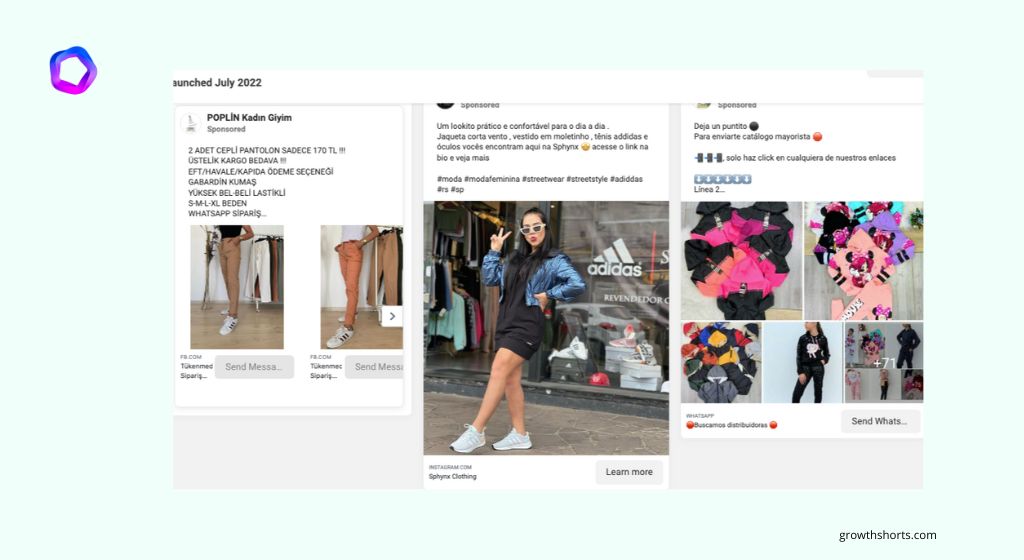
If you have a product or service that’s in demand, but not being bought, it’s time to start using PPC. Using this method of marketing allows you to reach people who are actively looking for your offering. By using the following tactics, you’ll be able to increase your visibility and drive more traffic to your website:
- Identify your target audience. This can be done by defining what kind of person is most likely willing to purchase from you, as well as where they live and what websites they visit (i.e., Facebook, LinkedIn).
- Create a compelling value proposition that speaks directly to the needs of that audience and how they’ll benefit from purchasing from you rather than another brand/business in the same space (i.e., product X offers lower prices than competitor Y while also providing better customer support).
- Create landing pages designed specifically for PPC campaigns so Google knows exactly what information needs presenting when someone clicks on one of these ads; these should also include links back into other parts of the website where visitors can learn more about specific features offered by each company if possible!
Use localized keywords in your PPC campaigns to attract hyperlocal customers
Have you ever noticed that some Google ads show up when you’re searching for things like “restaurants near me” or “new pizza place” in your city? You can thank localized keywords for that.
Localized keywords are the best way to reach hyperlocal customers, who want to buy from businesses nearby. These customers are often willing to pay more than their non-local counterparts because they don’t mind driving a little extra for better service, quality products or unique experiences. If your business is located in a specific area (or if it wants to attract nearby customers), then using localized keywords can be one of the most effective ways of growing your business and bringing in new revenue.
Pre-order campaign
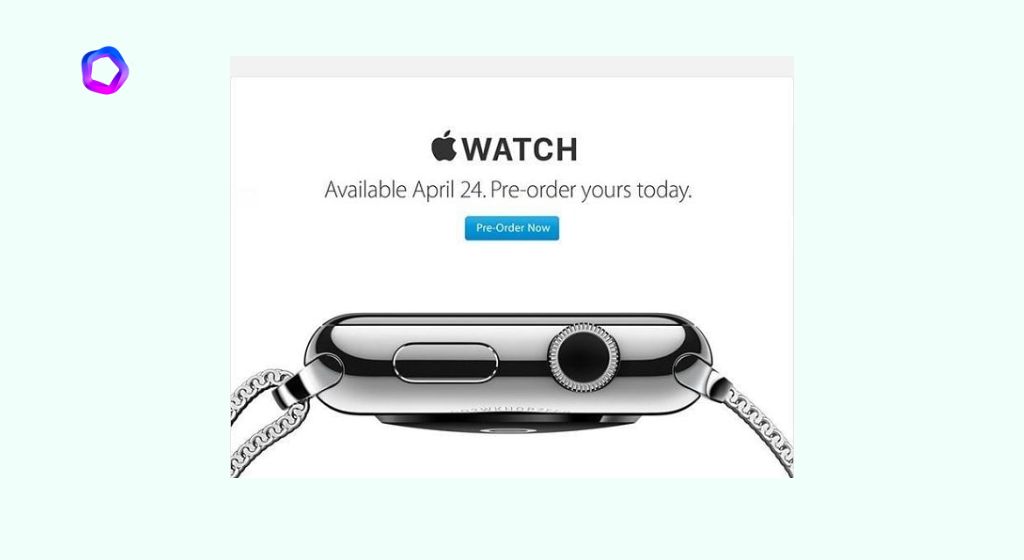
If you’re launching a new product, it’s important to understand how different types of pre-order campaigns can help drive demand for your product.
Pre-order campaigns are effective for a few reasons. First, pre-orders provide early validation that people want the product you’ve created and will buy it when you launch.
Second, they give you an indication of how much inventory you’ll need to manufacture or ship—allowing you to scale up production as necessary without wasting time or money on unnecessary stock levels.
Third, they establish trust with customers who know they’ll get the first access to your new product at launch and before anyone else even knows about it!
To run a successful pre-order campaign:
- Choose a platform that allows customers to pre-pay online using credit card or PayPal; this will make it easier for them to purchase than if they had only one option (such as mailing in payment)
- Set up rewards tiers based on size/quantity purchased; these will incentivize greater investments by offering discounts on larger purchases (and keep costs lower than having multiple separate products available)
Retarget website visitors with display ads
Remarketing is a type of advertising that involves targeting people who have already visited your website. In other words, it’s a way to show ads to people who have already shown interest in your business or product.
To do this, you need to first create an audience segment based on visitors to your site. You can then use this segment as the basis for creating a remarketing list in Google Ads. To get started, go to Audiences in the left menu and then click Create audience; select Custom audiences from the drop-down menu and choose “Custom combination.”
You’ll then be prompted to choose which signals you want to use as criteria for targeting. For example, if you want to target people who’ve been on your website but haven’t bought anything yet, select “Visited site” as a signal and “No purchase” as an action.
Then click Next step, which will take you through the process of setting up your audience segment (for more detailed instructions on how to do this click here).
Once you’ve created your audience segment, you can create a display network campaign using that segment as its targeting criterion. This will allow you to serve ads on websites across the internet that are relevant for people who have visited your site but not made any purchases.
Drive demand for accessories and complementary products
To drive demand for accessories and complementary products, include a link to the accessory in your email. To make it easy for people to access the information they need, consider including a link to the product on your website or social media pages.
You can also offer a discount code that is good only for purchases made through the email itself (this will increase sales). Finally, make sure there’s an obvious call-to-action that invites readers to browse or purchase these new products directly from their inboxes.
Use paid media to increase your CLV
Paid media can help you target people who are more likely to buy. By using paid media in conjunction with your organic marketing efforts, you can reach people who are more likely to purchase your product or service. This can be a huge boon for growth marketers looking to increase their customer lifetime value (CLV).
Use the power of social proof

Social proof is a form of persuasion that is based on the actions or opinions of others. It’s often used to encourage people to believe a claim or idea is true or valid, and it’s commonly used to encourage consumers to buy a product or service.
Social proof can take many forms, but one of the most common examples is when you see comments from people who have already bought a product saying how satisfied they are with their purchase.
If you see hundreds (or thousands!) of other people who are happy customers, then you may be more likely to believe that it’s worth spending your money on this product as well.
In addition to using social proof in your copywriting and email marketing campaigns, make sure that you include testimonials from real customers on your landing page too! This helps boost trust in visitors’ minds so they’re more likely to purchase something from your store.
Turn shoppers into repeat buyers by offering a discount

Offering a discount on their next purchase is the most common way of encouraging repeat purchases. The discount you offer can be a percentage off the price of the product they just bought, or it could be a flat amount off the total purchase amount.
If your business sells products, offering them an incentive to buy another item from your store can be a great way to increase sales and improve customer retention. A few examples of how this strategy could work:
- If you run an ecommerce store, offer customers $10 off their next order if they spend $50 or more today (up to 5 uses).
- If you own an office supply store, give loyal customers 10% off every time they place an order over $1000 in value (up to 3 uses).
Location-specific landing pages
Boost local visibility by creating location-specific landing pages and optimizing them for local search terms
According to a study by Moz and BuzzSumo, 92% of consumers are more likely to make a purchase after landing on a local business’ website than they are on Google. In fact, 90% of consumers will look up a business online before visiting in person or making an appointment with the company.
The main reason is that only 7% of businesses have optimized their website for local customers — but 86% say they plan to do so in the future. It’s clear that these numbers won’t stay this way for long: if your company doesn’t already have some sort of presence on Google Maps (and an address), now’s the time to get started!
Fill unsold seats by offering special incentives
Referral programs are a great way to fill unsold seats.
If you’re offering an incentive to existing clients, make sure it’s something small and valuable. It doesn’t need to be expensive or complex if it will help drive more referrals and sales.
As always, make sure the incentive is relevant and valuable to your customers so that they can see how much it would mean for them personally—then set up some simple steps for how they can earn those rewards quickly!
Here are some ideas:
- $10 off their next purchase/session (a gift card)
- Free entry into a raffle with prizes like free sessions or products (they can refer friends if they want)
Launch a referral program
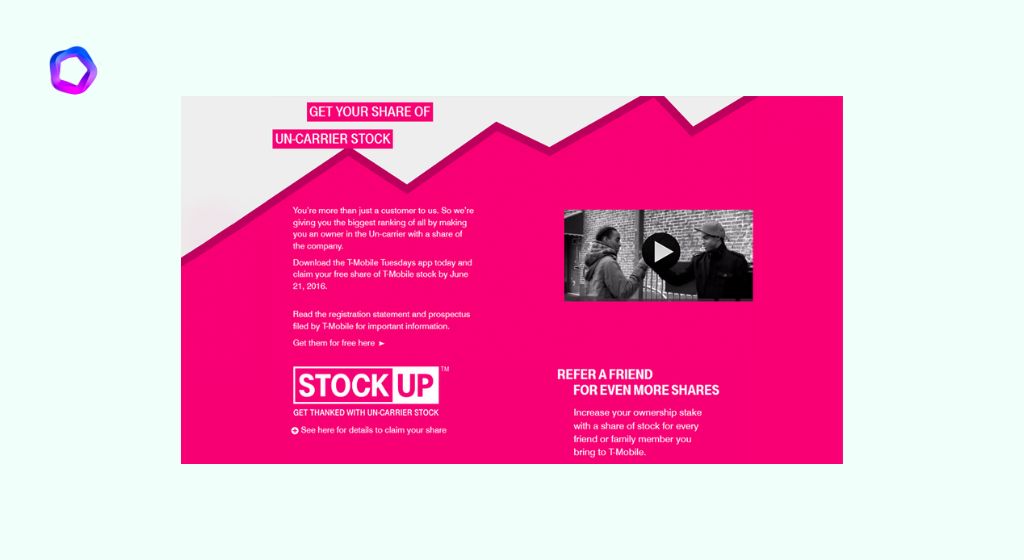
Referral programs are a great way to get more customers. They’re also a fantastic way to build a community, brand and loyalty from your existing customers.
Here’s how it works:
Customer 1 refers Customer 2 (or 3, 4, 5…) to your business. They do this by sharing their unique referral link with the person they want to refer (Customer 2).
Once Customer 2 clicks on the link and becomes an active user of your product/service – you give them an incentive (usually in the form of cash or free stuff) for doing so.
This can be done through a variety of ways such as sending them an email with instructions on how they can get started after signing up; adding some text at the bottom of each email reminding them about it; maybe even adding some kind of pop-up that appears when someone checks out but hasn’t yet signed up for the program yet.
Create a robust on-site search experience
One of the best ways to drive traffic and engagement is by creating a robust on-site search experience. This can be done by using tools like Google Search Console and/or Google Analytics to see what people are searching for on your site, improving your search results based on that data, and using these analytics to create content around popular topics.
Create a sense of urgency with scarcity marketing
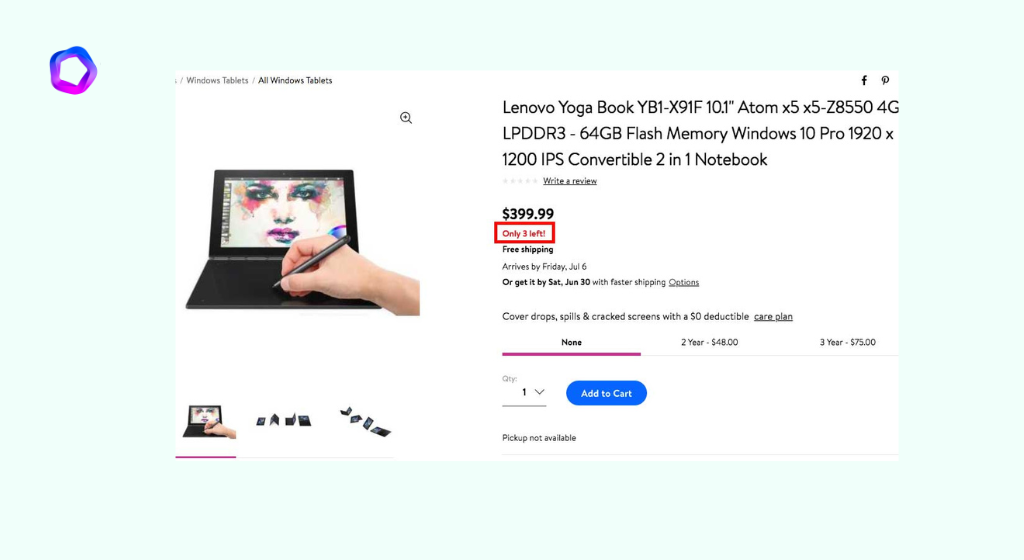
Send personalized messages
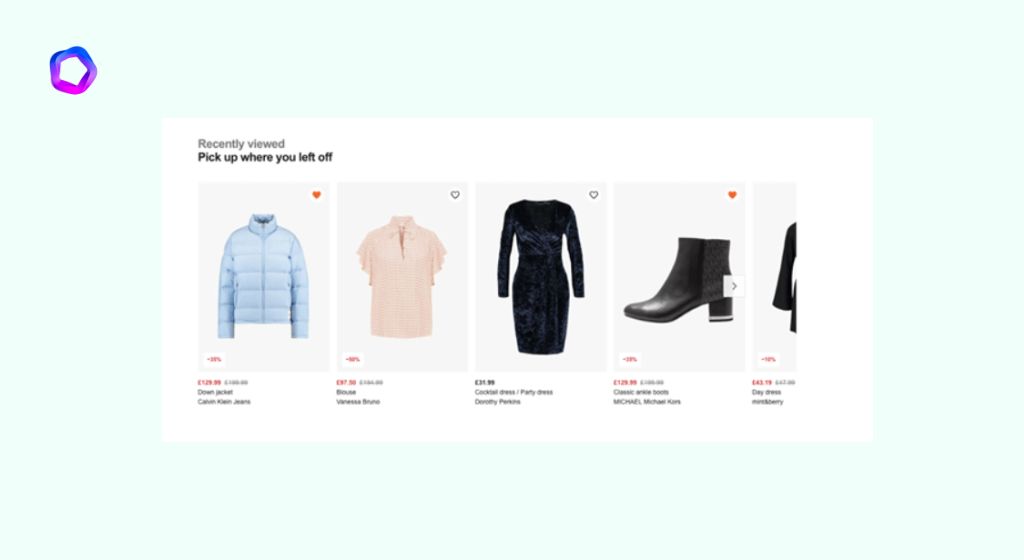
Personalized messages increase engagement and reduce the chance that people will delete or ignore your message, which means you’re more likely to get a response.
You can send personalized messages in three ways:
Customer reviews
Make it easy for your customers to share their reviews and feedback online.
It’s important to make it easy for your customers to leave you positive reviews on third-party platforms, as well as on your own website or social media profiles.
You can do this by including links in the footer of all emails that you send out, including a link in the signature at the bottom of each email message (if you use Gmail, there are simple instructions here).
You should also include a link to your positive reviews on every page of your business website and in each post you publish on social media sites such as Facebook, Twitter, LinkedIn and Instagram.
Active presence on Quora, Reddit
On Quora, you can answer questions and read those of others. You can also publish your own answers to the questions that you have the most expertise in.
On Reddit, you can answer questions and engage in conversations related to your niche. Other forums that are worth exploring include Hacker News and Growth Hackers (a forum for growth hackers).
You don’t need to use these platforms exclusively; instead, use them as a way to get established in your industry while also contributing value by answering questions asked by others and engaging with their content.
Engage in email retargeting
Email retargeting is a powerful tool for marketers. It’s not just about getting more sales from current customers. Email retargeting is also a way to get more sales from past customers, which can be really valuable if your business has been around for awhile and you have a large database of leads and prospects.
This strategy can help you increase revenue because it encourages people who have already interacted with your brand to come back again and buy something else (or buy more).
That gives them more exposure to the products or services that you offer, which in turn increases their chances of buying something else in future visits to the site.
Email retargeting works well because it allows you to target specific audiences based on data points like:
Get involved in community-building activities

Community building is a great way to connect with your customers, and it can also help you build a strong brand.
You’re probably already involved in some kind of community, whether it’s through your local chamber of commerce or a professional organization like the American Marketing Association (AMA).
But there are lots of other ways to get involved in community building activities as well. They don’t always have to be formal clubs; they could just as easily be informal groups that meet up at the pub every week after work. The key is making sure that whatever you do fits into one or more of these categories:
Social Networks: Facebook groups and LinkedIn groups are excellent places for getting together with other people who share common interests (e.g., “Marketing Newbies”).
They may not seem so glamorous at first glance because they don’t involve any physical interaction—but being part of such communities can help you build trust with future customers by giving them insight into how knowledgeable about their industry you truly are!
You might even end up influencing someone else’s decision-making process if they’re looking for advice on how best reach out via social media platforms such as Twitter and Pinterest – both highly effective methods used by businesses looking forward toward their future goals.”
Focus on user engagement metrics and KPIs
The most important thing to keep in mind is that when you’re doing growth marketing, you need to focus on the metrics that matter to your business. You can’t just look at one metric and decide if it’s good or bad—you need to understand how each metric is connected with other metrics (and with your business goals).
In this way, growth marketers are like chefs: they don’t care about how many people visited their restaurant last week; they only care about pleasing their customers and keeping them coming back for more.
Free growth hacking resources
Free growth hacking templates
So that’s it, folks!
We hope these examples help inspire you as you work on your growth marketing strategy. Remember to be flexible and adaptable to whatever works best for your company and audience. The best part about growth marketing is that it’s not a set-it-and-forget-it process—you can change tactics whenever necessary, so long as you have a strong foundation of the metrics that matter most to your business.
